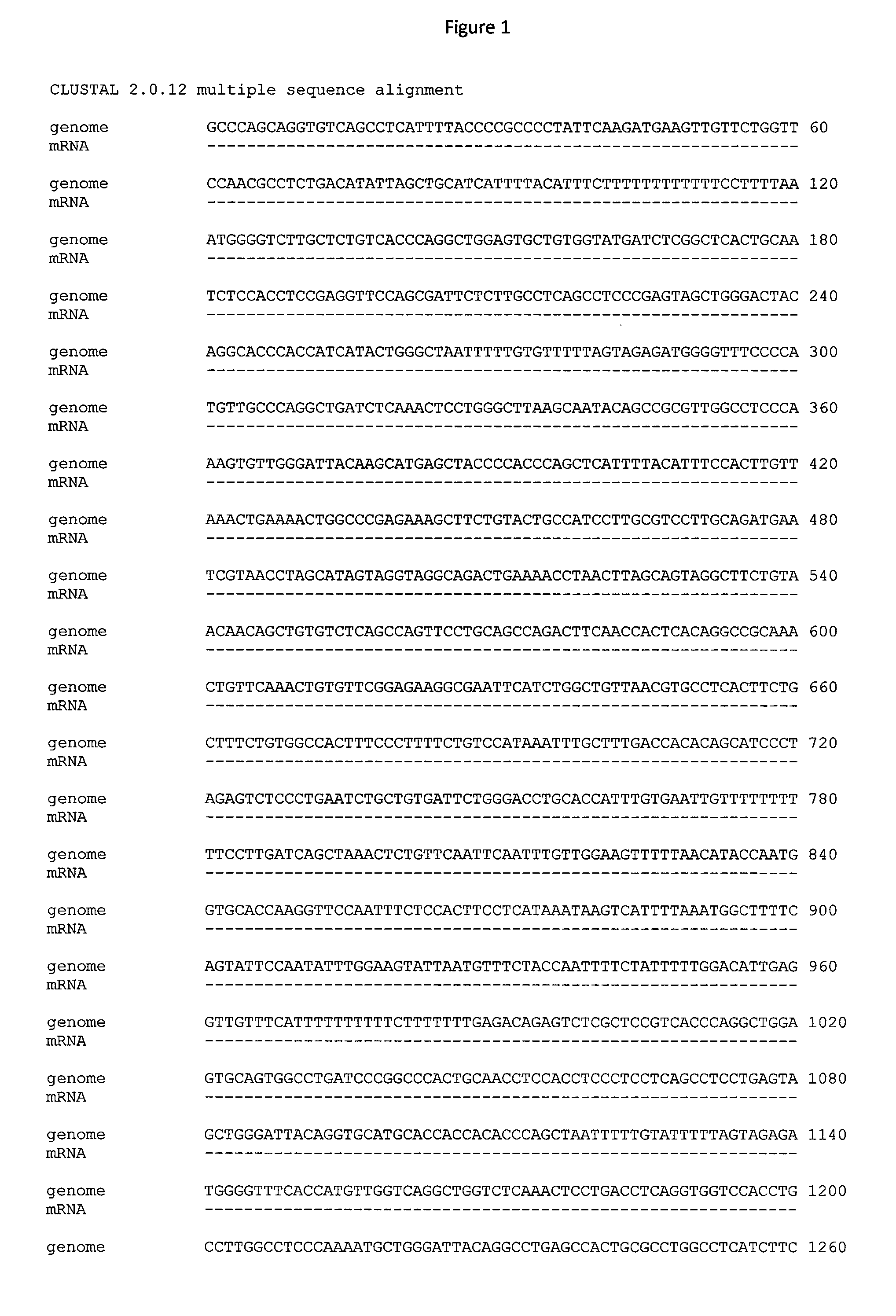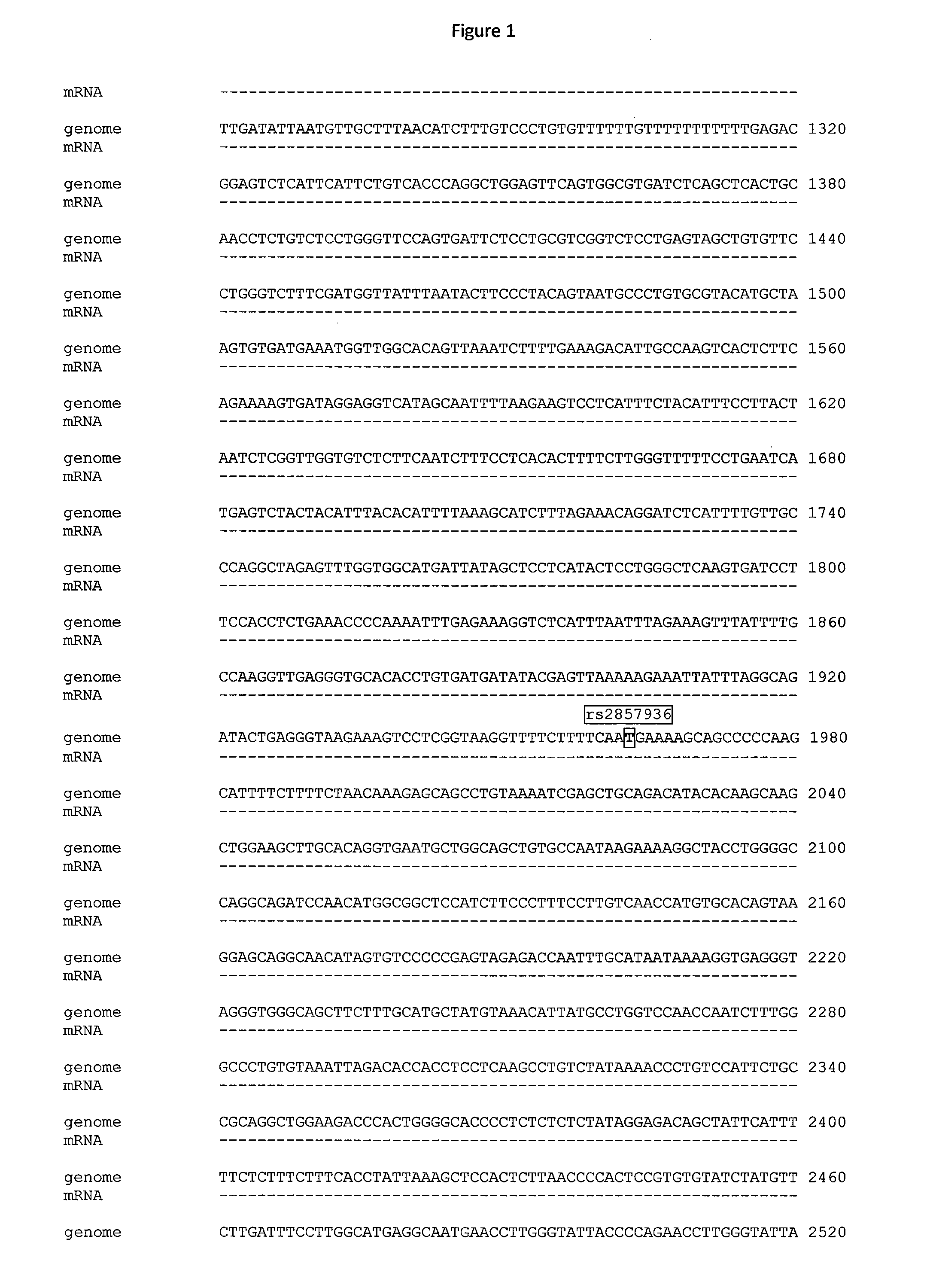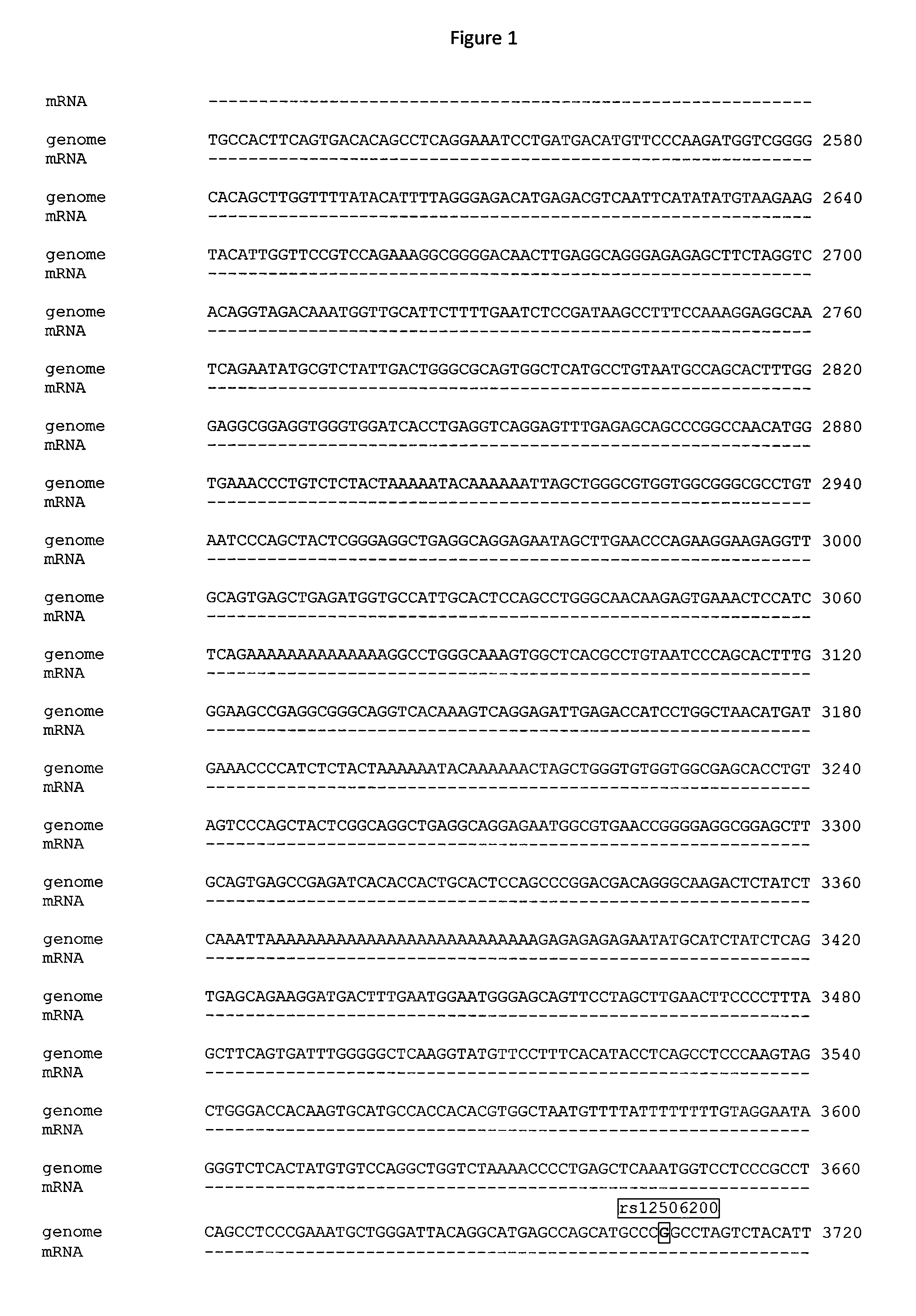Selective reduction of allelic variants
a technology of allelic variants and variants, applied in the field of selective reduction of allelic variants, can solve the problems of aggregation of mutant proteins causing disease and gain of function causing disease, and achieve the effects of reducing the expression of allelic variants, preventing, or reducing diseases
- Summary
- Abstract
- Description
- Claims
- Application Information
AI Technical Summary
Benefits of technology
Problems solved by technology
Method used
Image
Examples
example 1
Single Nucleotide Polymorphisms (SNPs) in the Huntingtin (HTT) Gene Sequence
[0367]The HTT genomic sequence, designated herein as SEQ ID NO: 1 (NT—006081.18 truncated from nucleotides 1566000 to 1768000) was aligned with the HTT mRNA, designated herein as SEQ ID NO: 2 (NM—002111.6), using the EMBL-EBI sequence database (ClustalW2, http: / / www.ebi.ac.uk / Tools / clustalw2 / index.html), and the output is presented in FIG. 1. SNP positions (identified by Hayden et al, WO / 2009 / 135322) associated with the HTT gene were mapped to the two sequences and have been demarcated in FIG. 1 by their reference SNP ID number from the Entrez SNP database at the National Center for Biotechnology Information (NCBI, http: / / www.ncbi.nlm.nih.gov / sites / entrez?db=snp), incorporated herein by reference. Table 2 furnishes further details on each SNP. The ‘Reference SNP ID number’ or ‘RS number’ is the number designated to each SNP from the Entrez SNP database at NCBI, incorporated herein by reference. ‘SNP position...
example 2
Design of Antisense Oligonucleotides Targeting Huntingtin Gene SNPs and Inhibition of HTT mRNA in Coriell Fibroblast Cell Lines (GM04281, GM02171, and GM02173B)
[0368]Antisense oligonucleotides targeting nucleotides overlapping SNP positions presented in Table 1 were designed and tested for potency in three huntingtin patient-derived Coriell fibroblast cell lines, GM04281, GM02171, and GM02173B (from the Coriell Institute for Medical Research). Cultured GM04281 cells or GM02171 cells or GM02173B cells at a density of 20,000 cells per well were transfected using electroporation with 10,000 nM antisense oligonucleotide. After a treatment period of approximately 24 hours, RNA was isolated from the cells and HTT mRNA levels were measured by quantitative real time PCR using primer probe set RTS2617 (forward sequence CTCCGTCCGGTAGACATGCT, designated herein as SEQ ID NO: 3; reverse sequence GGAAATCAGAACCCTCAAAATGG, designated herein as SEQ ID NO: 4; probe sequence TGAGCACTGTTCAACTGTGGATATCG...
example 3
Dose-Dependent Antisense Inhibition of Human Huntingtin mRNA Levels in Coriell Fibroblast Cell Lines
[0372]Gapmers from the study described in Example 2 were selected and tested at various doses in GM04281, GM02171, and GM02173B cell lines. Each cell line was plated at a density of 25,000 cells per well and transfected using electroporation with 750 nM, 1,500 nM, 3,000 nM, 6,000 nM, and 12,000 nM concentrations of antisense oligonucleotide, as specified in Table 5, 6, and 7. After a treatment period of approximately 16 hours, RNA was isolated from the cells and HTT mRNA levels were measured by quantitative real-time PCR. Human HTT primer probe set RTS2617 was used to measure mRNA levels. HTT mRNA levels were adjusted according to total RNA content, as measured by RIBOGREEN. Results are presented as percent inhibition of HTT mRNA, relative to untreated control cells. IC50 values are also provided in Tables 5, 6, and 7.
TABLE 5Dose-dependent antisense inhibition of human HTT in GM04281 ...
PUM
| Property | Measurement | Unit |
|---|---|---|
| Molar density | aaaaa | aaaaa |
| Molar density | aaaaa | aaaaa |
| Molar density | aaaaa | aaaaa |
Abstract
Description
Claims
Application Information
 Login to View More
Login to View More - R&D
- Intellectual Property
- Life Sciences
- Materials
- Tech Scout
- Unparalleled Data Quality
- Higher Quality Content
- 60% Fewer Hallucinations
Browse by: Latest US Patents, China's latest patents, Technical Efficacy Thesaurus, Application Domain, Technology Topic, Popular Technical Reports.
© 2025 PatSnap. All rights reserved.Legal|Privacy policy|Modern Slavery Act Transparency Statement|Sitemap|About US| Contact US: help@patsnap.com



